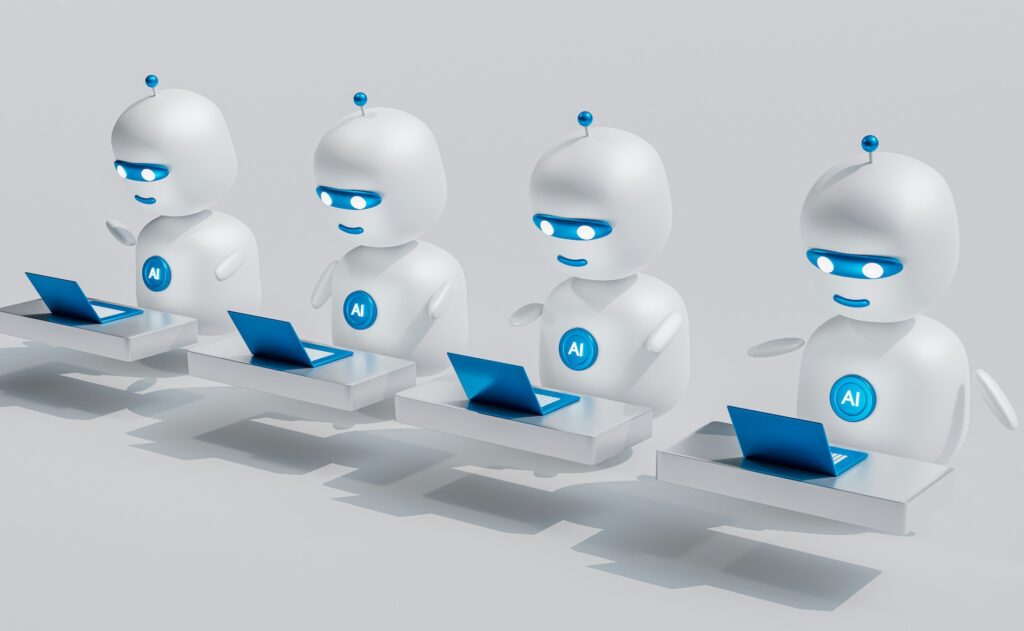I remember the stress of my first hire. Every dollar of runway counted, and the pressure to find the perfect person felt immense. I was looking for a generalist, a salesperson, and an engineer – all rolled into one. I found it, but it wasn’t a person. My first and most critical team member was AI, a tireless force multiplier that covered multiple roles for a fraction of the cost.
To make that a reality, you don’t just need a tool, you need a strategy. You need the right AI stack.
Why You Should Think of AI as a Team Member, Not Just a Tool
Let’s get the framing right. Tools are things you pull out of a toolbox for a specific job. Team members are collaborators you rely on day in and day out.
When you treat AI as your first “hire,” you change the game. You give it responsibilities, define its scope of work, and set clear expectations for its performance.
The objective is simple but powerful: delegate 80% of the repetitive, time-consuming busywork to your AI counterpart. This frees you, the founder, to focus on the 20% that truly moves the needle – judgment, strategic relationships, and visionary leadership.
The Core AI Stack for the Modern Founder
Building your AI team means hiring for specific roles. Here’s a breakdown of the essential stack, department by department.
1. Research & Knowledge (Your AI Research Assistant)
Before you build anything, you need to understand the landscape. Your AI research assistant can digest and summarize vast amounts of information in minutes, not weeks.
- Tools: Perplexity, ChatGPT, Claude
Use Cases: Running comprehensive competitor scans, summarizing market trends, drafting initial business cases, and answering complex strategic questions with cited sources.
2. Product & Engineering (Your AI Engineer & Product Manager)
Your AI engineer and product manager helps you get from idea to MVP faster. It assists in defining what to build by translating user needs into clear specifications, and then helps build it by handling foundational coding tasks. This allows you to focus on high-level product strategy and complex technical architecture.
- Tools: GitHub Copilot, Cursor, ChatGPT, Notion AI
Use Cases: Drafting user stories and PRDs, summarizing user feedback to identify pain points, generating acceptance criteria, translating product requirements into technical specifications, and then scaffolding features, debugging issues, and writing unit tests.
3. Sales & Outbound (Your AI Sales Development Rep)
Scaling your outreach without scaling your headcount is the ultimate advantage. Your AI SDR can prospect, research, and personalize communication at a scale no human can match.
- Tools: Clay, Apollo.io (with AI personalization), ChatGPT (for email drafts), Instantly (for email sending)
- Use Cases: Building highly targeted prospect lists, automatically researching leads to find personal hooks, drafting hyper-personalized outreach emails, and scoring leads based on engagement.
Example in Action: Imagine using Clay to pull a prospect’s latest LinkedIn post, then feeding it to ChatGPT with a prompt like: “Draft a 2-sentence email opener for a founder of a B2B SaaS company. Reference their recent post about scaling engineering teams: ‘[paste post text here]’. Connect it to our product, which helps automate code reviews.” The result is hyper-personalization at scale.
4. Marketing & Content (Your AI Marketing Associate)
Content is king, but it’s also incredibly time-consuming. Your AI marketing associate can act as a copywriter, designer, and video editor, churning out high-quality assets to fuel your growth engine.
- Tools: Jasper, Copy.ai, Midjourney/Stable Diffusion, Descript
Use Cases: Drafting SEO-friendly blog posts, generating creative social media updates, writing compelling ad copy, creating unique images and brand assets, performing sentiment analysis on customer feedback, and editing video or audio content.
5. Customer Support (Your First-Line Support Rep)
Providing instant, 24/7 support builds customer trust from day one. An AI support rep can handle the majority of common inquiries, ensuring your customers always feel heard.
- Tools: Intercom Fin, Zendesk AI, Custom GPT bots
- Use Cases: Providing instant answers to frequently asked questions, automatically triaging support tickets to the right person, and escalating only the most complex or sensitive issues to a human agent.
Use Cases: Summarizing legal documents or contracts, generating accurate meeting notes and action items, cleaning and structuring data, drafting initial versions of company policies or job descriptions, and automating internal workflows.
6. Fundraising & Investor Relations
This is one of the highest-leverage areas. Your AI analyst can help you run a tighter, more effective fundraising process, saving you hundreds of hours of manual work.
- Tools: ChatGPT-4o, Claude 3 Opus, AI-powered CRM tools
- Use Cases: Building targeted investor lists based on criteria like check size and portfolio synergy, refining your pitch deck narrative, simulating investor Q&A sessions to prepare for meetings, and drafting concise, data-driven investor update emails.
A Practical Framework: How to “Hire” AI in Your Startup
Thinking of AI as a team member requires a structured onboarding process.
- Step 1: Define the Roles. List all the tasks and responsibilities you would typically hire a human for in the first year.
- Step 2: Assign the 80% Tasks. Go through that list and identify the repetitive, process-driven tasks. Assign these to your “AI team.”
- Step 3: Match Tools to Roles. Use the stack above as a starting point to select the right AI tool for each defined role and set of tasks.
- Step 4: Onboard and Train. Treat your prompts and workflow designs as an onboarding plan. Be clear, provide context, and refine your instructions based on the output. This is how you “train” your new AI teammate.
- Step 5: Conduct Performance Reviews. Regularly review the output and efficiency of your AI tools. Are they saving time? Is the quality high? Don’t be afraid to “fire” a tool that isn’t performing and “hire” a better one.
Pitfalls to Avoid on Your AI Journey
Building an AI-powered team comes with incredible leverage, but it’s not a silver bullet. Watch out for these common mistakes:
- The “Set It and Forget It” Trap: AI is a co-pilot, not an autopilot. It requires your direction and judgment. Never ship AI-generated content or code without a human review. The goal is augmentation, not abdication.
- The “Shiny Object” Syndrome: It’s easy to get excited and subscribe to a dozen AI tools at once. This creates chaos. Master one or two tools that solve your biggest bottlenecks before expanding your stack. Don’t “hire” an entire department before you’ve successfully onboarded your first AI assistant.
- Outsourcing Your Soul: Never let AI manage your key relationships. You can’t automate trust with a co-founder, empathy for a customer, or a handshake with an investor. Use the efficiency gains from AI to spend more time on the human connections that define your company.
Your First Hire is Waiting
Your first human hire will still be one of the most important decisions you ever make. But making AI your first team member is the strategic move that gives you the breathing room to get that human hire right. It’s how you build, sell, and scale smarter.
Think beyond the monthly subscription – what you’re really acquiring is leverage. You’re hiring a tireless team of specialists for less than your internet bill. Stop trying to do everything yourself. Your first hire is waiting.









